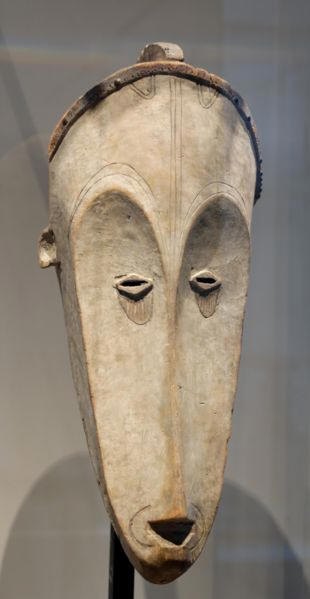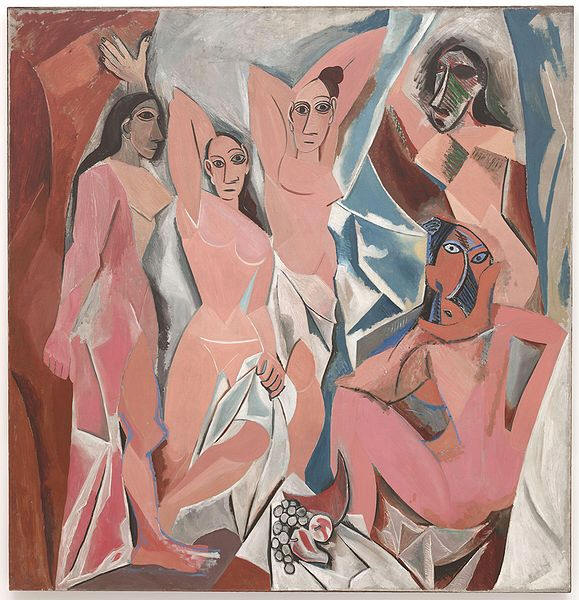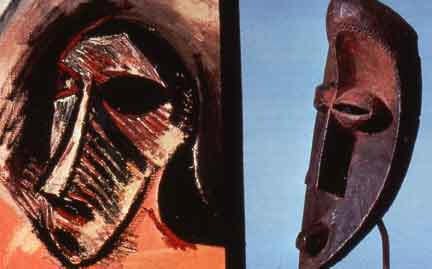

Achebe, Conrad, African and Modern Art
"But more important by far is the abundant testimony about Conrad's savages which we could gather if we were so inclined from other sources and which might lead us to think that these people must have had other occupations besides merging into the evil forest or materializing out of it simply to plague Marlow and his dispirited band. For as it happened, soon after Conrad had written his book an event of far greater consequence was taking place in the art world of Europe. This is how Frank Willett, a British art historian, describes it:
Gaugin had gone to Tahiti, the most extravagant individual act of turning to a non-European culture in the decades immediately before and after 1900, when European artists were avid for new artistic experiences, but it was only about 1904-5 that African art began to make its distinctive impact. One piece is still identifiable; it is a mask that had been given to Maurice Vlaminck in 1905. He records that Derain was 'speechless' and 'stunned' when he saw it, bought it from Vlaminck and in turn showed it to Picasso and Matisse, who were also greatly affected by it. Ambroise Vollard then borrowed it and had it cast in bronze. . . The revolution of twentieth century art was under way!
The mask in question was made by other savages living just north of Conrad's River Congo. They have a name too: the Fang people, and are without a doubt among the world's greatest masters of the sculptured form. The event Frank Willett is referring to marks the beginning of cubism and the infusion of new life into European art, which had run completely out of strength.
The point of all this is to suggest that Conrad's picture of the people of the Congo seems grossly inadequate even at the height of their subjection to the ravages of King Leopold's lnternational Association for the Civilization of Central Africa."
From An Image of Africa, 1977.
See: Vast Collection of African Masks/Art here


This 19th century Fang sculpture is similar in style to what Picasso encountered in Paris just prior to Les Demoiselles d'Avignon, 1907

Picasso. Head of
a Woman, (oil on canvas, 1907) Dan Mask